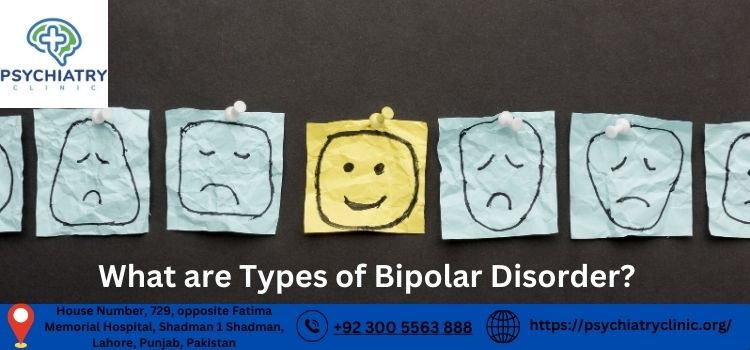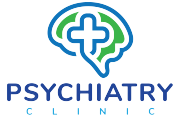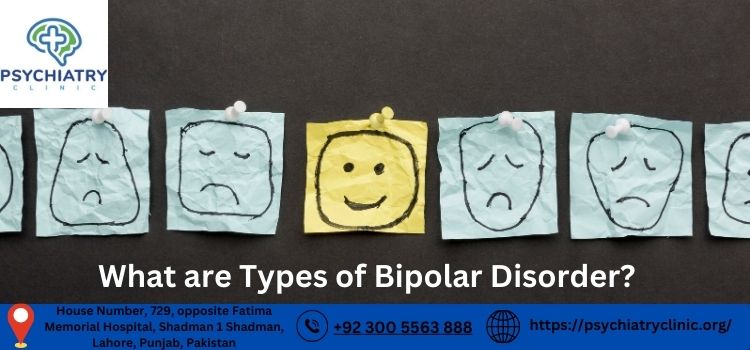What are Types of Bipolar Disorder? Comprehensive Guide
Bipolar disorder is a condition that affects the brain and causes unusual shifts in mood, energy, activity levels, and the ability to carry out daily tasks. It is a serious mental illness that can lead to extreme changes in behavior and emotions. After knowing about bipolar the question arises what are types of bipolar disorder?
In this blog post, we will discuss the various types of bipolar disorder and their characteristics symptoms and treatment.
Let’s dive in to get more details.
What are Types of Bipolar Disorder?

Bipolar disorder is a mental health condition where individuals experience extreme mood swings, ranging from manic episodes to depressive episodes. These mood swings can significantly impact an individual’s daily life and relationships.
There are three main types of bipolar disorder:
- Bipolar I Disorder
- Bipolar II Disorder
- Cyclothymic Disorder
Bipolar I Disorder
Bipolar I disorder is the most severe and well-known type of bipolar disorder. People with this form of bipolar experience episodes of mania and depression, which can occur simultaneously or separately. These episodes are often intense and can last for weeks or months at a time. During a manic episode, individuals may exhibit extreme euphoria, excessive energy, impulsive behavior, and a decreased need for sleep.
Symptoms
Symptoms of bipolar disorder are given below:
- Euphoria or extreme happiness
- Increased energy levels and activity
- Irritability and agitation
- Racing thoughts and difficulty concentrating
- Risky behavior such as excessive spending, substance abuse, or reckless driving.
During a depressive episode, individuals may experience feelings of sadness, hopelessness, and worthlessness. They may also have low energy levels, changes in appetite, difficulty sleeping, and thoughts of suicide.
Treatment
Treatment of Bipolar I Disorder are given below:
Medications:
Mood stabilizers, antidepressants, and antipsychotics are commonly prescribed to manage symptoms of bipolar I disorder.
Psychotherapy:
Cognitive-behavioral therapy (CBT) and psychoeducation can help individuals learn coping skills for managing mood episodes and improving overall functioning.
Lifestyle changes:
Regular exercise, a healthy diet, and sufficient rest can also help manage symptoms of bipolar disorder.
Bipolar II Disorder
Bipolar II disorder is a milder form of bipolar disorder compared to Bipolar I. People with this type experience episodes of depression and hypomania, which is a less severe form of mania. Hypomanic episodes may still cause some impairment in daily functioning but are less intense and last for a shorter period compared to manic episodes.
Symptoms
Symptoms of bipolar II disorder may include:
- Depressive symptoms (same as Bipolar I)
- Increased energy levels and activity
- Impulsive behavior
- Hypomania symptoms such as inflated self-esteem.
Treatment
Treatment of Bipolar II Disorder are given below:
Medications: Mood stabilizers, antidepressants, and antipsychotics may be prescribed to manage symptoms. However, caution must be taken with antidepressants as they can trigger manic episodes in individuals with bipolar disorder.
Psychotherapy: CBT and psycho education can help individuals learn coping skills for managing mood episodes and improving overall functioning.
Lifestyle changes: Similar to bipolar I disorder, lifestyle changes such as regular exercise, a healthy diet, and sufficient rest can also help manage symptoms.
Cyclothymic Disorder
Cyclothymic disorder is a chronic condition characterized by milder mood swings compared to Bipolar I and II. Individuals with this type of bipolar experience frequent fluctuations between mild depression and hypomania. These mood swings are not as severe or long-lasting but can still cause some impairment in daily functioning.
Symptoms
Symptoms of cyclothymic disorder may include:
- Mild depressive symptoms
- Hypomania symptoms
- increased energy
- Impulsivity
- Elevated mood.
Treatment
Treatment for cyclothymic disorder may involve mood-stabilizing medications, psychotherapy, and lifestyle changes.
Other Specified and Unspecified Bipolar Disorder
These are terms used to describe bipolar symptoms that do not fit into the other defined types of bipolar disorder.
Symptoms
Symptoms may vary widely depending on the individual, but they can include a mixture of depressive and manic symptoms.
Treatment
Treatment for these types of bipolar disorder is individualized and can include a combination of medication, therapy, and lifestyle changes.
Conclusion
In conclusion, bipolar disorder can manifest in different ways and have varying degrees of severity. But one should know What are types of bipolar disorder? It is important to seek help from a mental health professional if you or a loved one is experiencing symptoms of bipolar disorder. With proper treatment and management, individuals with bipolar disorder can lead fulfilling lives.
Remember, seeking help is not a sign of weakness but rather a courageous step towards better mental health. So, don’t hesitate to reach out and get the support you need. Stay informed and stay healthy!
FAQs
Some of the frequently asked questions by people are mentioned below:
What are the 3 main types of bipolar?
The three main types of bipolar disorder are Bipolar I Disorder, Bipolar II Disorder, and Cyclothymic Disorder. Other Specified and Unspecified Bipolar Disorders may also be used to describe symptoms that do not fit into these categories.
What is a bipolar person like?
People with bipolar disorder can experience extreme and intense mood swings, ranging from manic episodes to depressive episodes. These mood swings can significantly impact their daily lives and relationships. Symptoms may vary depending on the type and severity of bipolar disorder.
Is bipolar disorder serious?
Bipolar disorder is a serious mental health condition that can significantly impact an individual’s life if left untreated. It is essential to seek help from a professional for proper diagnosis and treatment.
What are the 4 types of bipolar?
The four types of bipolar disorder are Bipolar I Disorder, Bipolar II Disorder, Cyclothymic Disorder, and Other Specified and Unspecified Bipolar Disorders. Each type may have different characteristics and symptoms.
Which bipolar is most common?
Bipolar I Disorder is the most common type of bipolar disorder, affecting approximately 1% of the population. However, it is essential to remember that every individual’s experience with bipolar disorder may be different.

